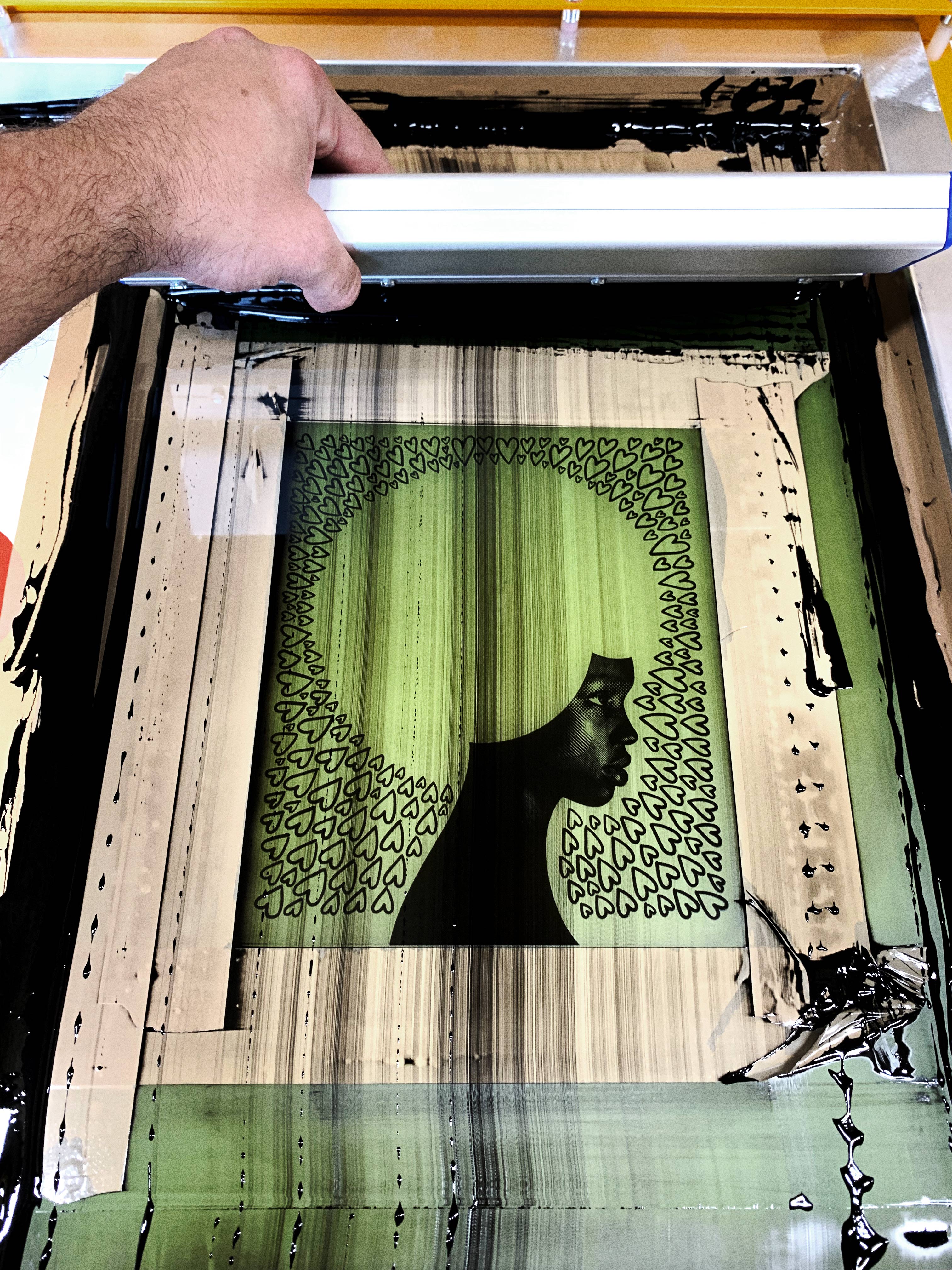ChatGPT said: How 10:9 Design Texas is leading the screen printing industry
The Vital Overview to Understanding Screen Printing and Its Versatile Utilizes
Screen printing has an abundant history that goes back to old times, evolving right into an advanced method utilized throughout numerous sectors today. This overview discovers the ins and outs of the screen printing process, outlining its applications in fashion, home, and advertising and marketing style - 10:9 Design Texas. Understanding these principles can open up creative capacity for both industrial and artistic projects. The adhering to areas will certainly expose vital suggestions and techniques to boost one's screen printing endeavors
The Background of Screen Printing
Although screen printing has roots that trace back centuries, its evolution reflects the technological and artistic innovations of different societies. Coming from old China, the method was at first utilized for enhancing fabrics and later spread to Japan, where it ended up being important to Ukiyo-e woodblock printing. The technique changed to Europe in the 18th century, where it got popularity amongst artisans and commercial printers. The creation of picture solution in the 20th century transformed screen printing, permitting even more complex designs and greater efficiency. Artists like Andy Warhol additionally thrust its popularity, making use of the tool to develop iconic jobs that blended commercialism and fine art. By the late 20th century, screen printing had developed itself as a functional strategy, utilized in style, advertising, and fine art. Today, it continues to progress, integrating electronic innovation and expanding its applications throughout various markets.
The Screen Printing Refine Explained
Screen printing transforms artistic visions into substantial styles via a series of precise steps. Originally, an image is developed and afterwards transferred onto a screen, usually made of fine mesh fabric stretched over a frame. A light-sensitive solution is put on the screen, which is revealed to light, setting in areas not covered by the image. After cleaning out the unhardened emulsion, a stencil is created.
Next, the screen is put over the substratum, whether it be material, paper, or another product. Ink is after that pressed through the open areas of the pattern making use of a squeegee, depositing the design onto the substrate below. This procedure can be repeated for numerous colors, calling for different displays for every tone. The printed product is cured utilizing warm to assure the ink adheres effectively, resulting in a durable, dynamic style prepared for use.
Kinds of Screen Printing Techniques

In addition, specialty strategies, such as discharge screen printing, eliminate color from the textile to produce softer prints, while aluminum foil screen printing applies metallic foil to accomplish a glossy finish (10:9 Design reviews). Each strategy uses unique attributes, satisfying various creative demands and production scales, ultimately increasing the opportunities within the screen printing domain name
Applications of Screen Printing in Various Industries

Additionally, the signs and advertising fields make use of screen printing for producing captivating display screens and banners. This method enables for bold colors and intricate styles that catch interest. In electronics, screen printing is employed for using conductive inks to circuit card, necessary for component links. Moreover, the home decoration market embraces screen printing to generate unique styles on textiles and wall surface art. Generally, screen printing acts as an important device across diverse fields, boosting products with customized and visually enticing graphics.
Tips for Successful Screen Printing Projects
While taking on a screen printing project, mindful attention to information can considerably enhance the final result. Choosing premium products is necessary; this includes the screen, inks, and substrates. Utilizing appropriate mesh matters can affect ink deposition and information resolution. Preparation is equally essential; detailed cleaning of screens and appropriate exposure times assure crisp prints.
Next off, accurate enrollment is vital for multi-color prints. Utilizing placement devices can help achieve precise layering. In addition, testing prints on scrap products before production assists recognize prospective problems without throwing away sources.

Often Asked Concerns
What Products Are Finest for Screen Printing on Fabric?
Cotton and polyester blends are perfect for screen printing on textile because of their resilience and ink absorption. Furthermore, specialized materials like silk or canvas can create special structures and finishes, boosting the overall design quality.
Just how Do I Tidy and Maintain Screen Printing Equipment?
To maintain and clean screen printing tools, one need to regularly clean screens with proper solvents, inspect squeegees for wear, oil moving components, and store all things in a dry, dust-free setting to prolong their life-span.
What Are the Environmental Impacts of Screen Printing?
Screen printing can have significant environmental influences, including chemical waste from solvents and inks, water usage during cleaning procedures, and energy usage. Sustainable techniques and environmentally friendly materials are important for lessening these adverse results.
Can Screen Printing Be Done in the house Properly?
Screen printing can be successfully done at home with the ideal products and techniques. Hobbyists can produce high quality prints, though success depends on their skill level, tools, and understanding of the process included.
What Are the Costs Connected With Beginning a Display Printing Service?

Beginning a screen printing business involves prices for equipment, materials, and work area. Initial expenditures typically range from a couple of hundred to numerous thousand bucks, depending upon the scale, top quality of equipment, and wanted production capacity.
Screen printing has an abundant history that dates back to old times, developing into a sophisticated technique used across different markets today. Another strategy, rotary screen printing, employs cylindrical displays, promoting continual printing on textile rolls, thus improving efficiency for large manufacturings. Furthermore, specialized techniques, such as discharge screen printing, eliminate dye from the fabric to develop softer prints, while aluminum foil screen printing uses metal foil to achieve a glossy finish. In the style field, screen printing is widely utilized to create lively styles on apparel, allowing brands to showcase their special designs. Cotton and polyester blends are excellent for screen printing on textile due to their toughness and ink absorption.